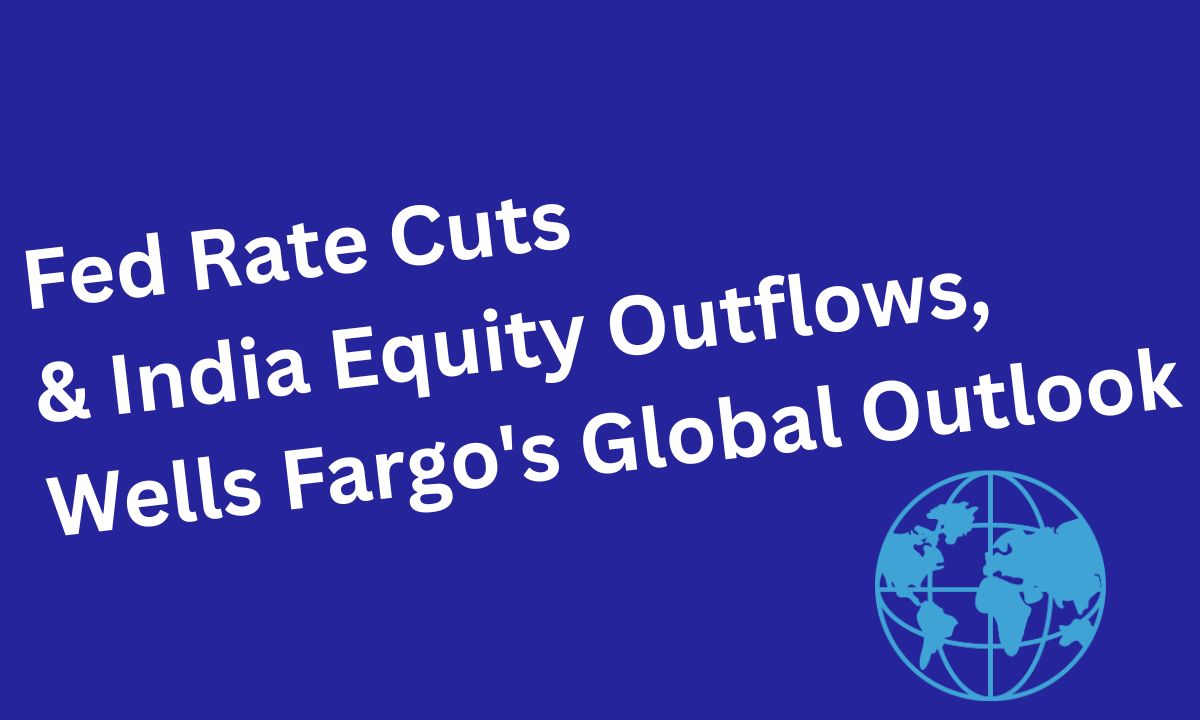The Federal Reserve‘s rate-cutting trajectory just got clearer, and the implications for global markets are significant. In recent public remarks, Chidu Narayanan, Head of Macro Strategy Asia Pacific at Wells Fargo, laid out a comprehensive view of where central bank policy is heading and what it means for investors worldwide.
Fed’s Rate Cut Path: Normalization, Not Panic
Here’s what stands out from Narayanan’s analysis: the Fed isn’t rushing toward aggressive easing. Instead, we’re looking at a measured approach to rate cuts that reflects confidence in the economy rather than concern about collapse.
The projection calls for 25 basis point cuts at both remaining meetings this year, followed by another 50 basis points of cuts at a more gradual pace in the first half of next year. What’s particularly interesting here is the target destination—a neutral rate around 3.25%. This is normalization, not emergency stimulus.
Last week’s US data supports this measured approach. GDP growth received upward revisions, particularly from the consumer side. Personal consumption expenditure numbers came in flat—still elevated but not accelerating. That’s the sweet spot the Fed wants to see.
The Tariff Inflation Question
The tariff situation presents the most significant wild card in this outlook. Markets have fixated on inflationary pressures from tariffs throughout the year, but Narayanan points out something crucial: we haven’t actually seen the inflationary impact materialize yet. The first half of the year featured more policy announcements than actual tariff implementation, which really kicked in during July and August.
Examining the Fed’s likely response, the key distinction isn’t about inflation itself—it’s about inflation expectations. The central bank will tolerate temporary price increases from tariffs, but deanchoring of inflation expectations would trigger a different response entirely. If the inflation proves transitory this time, the Fed will look through the near-term elevation.
India’s Complex Position
The Reserve Bank of India faces a more complicated landscape. After frontloading with a 50 basis point cut recently, the central bank appears positioned to pause and assess. The RBI has more limited space for cuts compared to the Fed, but room still exists.
India confronts substantial external headwinds right now. The data reveals India has experienced the largest equity outflows in Asia—not just on a monthly basis, but quarterly as well, substantially exceeding the next largest outflow in the region.
The headwinds stack up: increased tariffs on pharmaceutical imports to the US, higher tariffs on auto imports, elevated H-1B visa fees creating workforce challenges. These external pressures weigh heavily on sentiment.
What provides balance? Domestic consumption remains generally strong. Domestic economic activity holds up quite well. The RBI’s aggressive easing already provides support through the system. This creates space for the central bank to pause and observe how conditions develop.
The currency situation factors into this calculus as well. The analysis suggests the bottom for the Indian rupee sits somewhere near current levels—perhaps not quite reached, but approaching. This potential stabilization gives the RBI additional room to maintain current policy rates while monitoring global developments.
Global Growth: The Sustainability Question
The critical question facing markets: can global growth sustain itself in this tariff-heavy environment?
The composition of US growth offers genuine comfort. This isn’t government-driven spending creating temporary expansion, as we saw during certain phases of the pandemic response. Current growth stems from consumer activity, which forms the bulwark of the US economy and proves more sustainable over time.
What’s particularly notable—despite all the uncertainty and volatility from tariff policy, domestic consumption hasn’t collapsed. It’s softer, certainly, but examining individual segments of the US economy reveals resilience across multiple areas.
The housing market maintains stability—not dramatically strong, but not collapsing either. The credit market continues performing well. Fiscal impulse continues flowing over the next few quarters. Monetary policy has begun its gentle easing cycle. Inflation isn’t running away. The labor market shows some slack but isn’t collapsing.
This composition of growth indicators provides substantial comfort for the near-term outlook. The bias suggests global growth stays supported under current conditions.
The Uncertainty Factor
The caveat, of course, centers on policy unpredictability. Future tariff escalations remain possible—particularly services tariffs, which haven’t featured prominently yet. Political risks continue surfacing globally. These uncertainties require constant monitoring and adjustment.
Market Implications
What this means for positioning: as long as global growth holds up reasonably well, risk assets perform. Cyclical currencies benefit. Cyclical markets find support. India, despite its current headwinds, should see more support as these dynamics play out.
The Fed’s path toward neutral rates creates a constructive backdrop for markets globally. The measured pace prevents shock to the system while providing accommodation as the economy normalizes post-pandemic distortions.
For investors, the key becomes monitoring those inflation expectations closely. The Fed has made clear it won’t tolerate deanchoring, which means any signs of inflation expectations breaking higher would shift the entire rate-cut trajectory. The data from recent weeks suggests we’re not at that point, but vigilance remains essential.
The interplay between easing monetary policy, tariff-driven inflation pressures, and resilient consumer spending creates a complex but ultimately navigable environment for markets. The challenge lies in distinguishing temporary disruptions from structural shifts—and right now, the evidence points toward the former rather than the latter.
